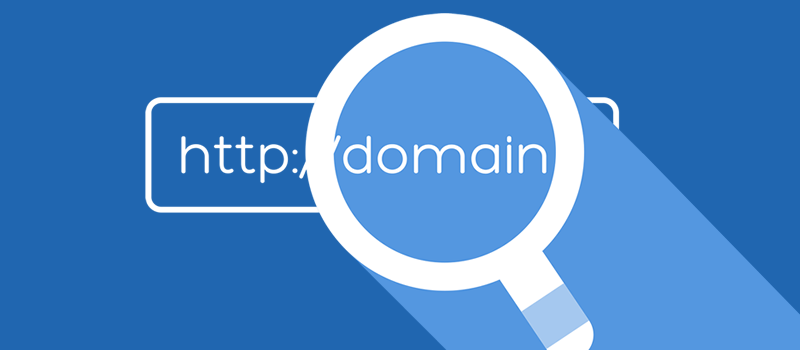A Google business email is crucial for building trust and credibility in professional interactions. With nearly 5 billion email users worldwide expected by 2025, having a dedicated business email account ensures effective communication with customers and partners. Here’s a step-by-step guide on creating a free email address tailored to your business needs.
- Select a Domain Name for Your Email

When creating a Gmail business email, the domain name refers to the part that follows the “@” symbol. For instance, in the email address john.doe@yourcompany.com, “yourcompany.com” is the domain. While “.com” is the most common domain, there are many other options, like “.co.uk”, “.net”, and more. These are known as Top-Level Domains (TLDs).
- Verify Domain Availability
Before proceeding, check if your desired domain is available. You might want a custom domain like yourcompany.com, but it’s crucial to ensure that no one else has already claimed it. You can perform a quick domain search to confirm availability and explore alternative domain names if necessary.
Related Reading:
If you’re unsure which domain extension (TLD) to choose, check out our guide on What domain extension should I use? for more insights.
- Choose a Domain Host
A domain host is the company that will maintain your email address and ensure your messages are delivered and stored properly. Popular hosting providers like One.com offer both domain hosting and email services. Select a reliable host to ensure your email remains operational.
- Pick the Right Plan for Your Email Setup
Many domain hosting services, such as One.com, offer a variety of hosting plans. For businesses on a tight budget, the Essential Plan can be a great starting point. It allows you to set up a professional business email account at no cost for the first year and comes with several useful features:
Ad-free email for a clean and professional interface
Spam protection to keep your inbox safe
15 GB email storage for secure storage of all your business communications
5 email accounts included (ideal for small teams)
3 GB mailbox size per account
As your business expands, you can always upgrade to a more advanced package, such as an Unlimited Plan, which offers even more features and flexibility.
- Create Your Business Email Account
Once you’ve chosen a hosting plan, the next step is setting up your email account. You can do this through your hosting provider’s control panel. For example, in One.com, simply navigate to the Email section and click New Account. This will guide you through the steps to create your professional email address.
If you need assistance, many domain hosts provide detailed tutorials to help you through the process.
- Use Email Aliases for Professionalism
An email alias is a helpful feature when starting a business. An alias is essentially an email address that doesn’t have its own inbox, but forwards incoming messages to another existing account. For example, you can set up an alias like sales@yourcompany.com or info@yourcompany.com. This makes your business appear more professional without needing multiple email accounts right away.
- Set Up an Email Signature
An email signature is an important finishing touch for your professional email. It helps customers and clients easily identify who they are communicating with. Ensure your signature includes your name, role, and business contact information, like your website and social media links.
Additionally, you can use your email account to set up an online calendar and address book—critical tools for staying organized and managing your communications efficiently.
Tips for a Professional Business Email Address
A well-crafted email address can impact your professional image. Here are some tips for choosing the best one for your business:
Keep it simple: Avoid long and complicated email addresses. Use your name or a combination of your name and company name.
Be professional: An email like john@yourcompany.com will always look more professional than john.doe2000@coolmail.com.
Use your domain: Having your business name as the domain name (e.g., info@yourcompany.com) enhances brand identity and trust.
Examples of Professional Business Email Addresses
Still undecided? Here are a few examples of solid business email address formats:
firstname.lastname@yourcompany.com
While you can opt for something quirky or creative (like superstar@yourcompany.com), it’s often best to maintain professionalism, especially when dealing with clients or customers who may be unfamiliar with your brand.
Why You Need a Business Email Address
A business email address offers numerous advantages, including:
Branding: It reinforces your company’s identity and professionalism.
Credibility: Customers are more likely to trust communications from a business email address rather than a personal one.
Security: It helps protect your business from phishing scams and unauthorized access, especially if you follow proper security practices like using strong passwords and two-factor authentication.
To manage emails efficiently, set up your business email on various devices.
8 . Accessiong business email on mobile and desktop
For Gmail (Google Workspace users):
- Open the Gmail app.
- Go to Settings > Add Account.
- Select Google and log in with your business email.
For Outlook (Microsoft 365 users):
- Open Outlook.
- Click File > Add Account.
- Enter your business email and password.
For iPhone (Apple Mail users):
- Go to Settings > Mail > Accounts > Add Account.
- Choose your email provider and enter credentials.
Copyright © 2025 by techhelper.info All Rights Reserved.
